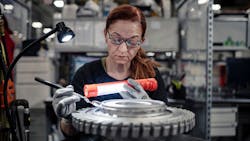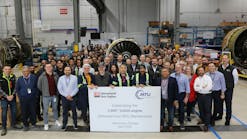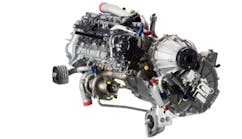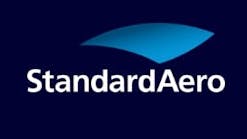Part Repair Collaboration Brings Operators Relief from Rising Costs
Keeping the fleet flying isn’t an easy job. But thanks to the team at Connecticut Rotating Parts (CTRP), an initiative to maintain the lifespan of precision engine parts is earning high praise from Pratt & Whitney customers facing a one-two punch of supply chain issues and rising materials costs. CTRP is part of East Hartford Repair Operations at Pratt & Whitney, a Raytheon Technologies business.
CTRP has joined forces with Pratt & Whitney Aftermarket & Sustainment Engineering (ASE) to execute repair development solutions and develop enhanced repair capabilities for parts in the maintenance, repair and overhaul cycle. The goals of this collaboration include reducing reliance on new parts in a constrained supply chain and achieving significant savings for CTRP customers.
“As these engines get farther along in their lifecycle, it’s harder to keep new parts flowing,” especially as global supply chains are choked, said Jack Foulis, CTRP repair development engineering manager. “New engine parts can be extremely costly to produce. If we can recover a part, then it helps to control customers’ cost of ownership and it’s one fewer we have to manufacture in a constrained environment.”
Foulis explained that each engine can fly tens of thousands of cycles over its lifetime. Dents, nicks and surface wear on engine parts are considered normal wear and tear during an engine’s operation. But a part’s life expectancy can be maintained as Pratt & Whitney develops new processes and introduces new equipment to repair parts faster, and ultimately avoid replacing them.
“A lot of the business that comes through this shop is for our mature commercial engines, and some of the parts are not easily manufactured in today’s environment,” he said. “For customers, repairing these parts dramatically reduces their cost of ownership while keeping their aircraft flying safely.”
If more parts can be repaired rather than replaced, and engines spend less time out of service awaiting new parts, then Pratt & Whitney leaders expect customer satisfaction will continue to rise, especially as anticipated savings are realized.
Along with experienced CTRP engineers, technicians and operators, more than two dozen ASE repair engineers are on the shop floor and available to help explore ways to apply these repair development solutions to other product lines, both commercial and military.
“Our ASE Major Rotating Parts engineering team is in the shop every day and answers the phone when CTRP requires a repair solution. We understand that every part counts and this partnership is what keeps us efficient and successful,” said Robert Poulin, major rotating parts repair design lead.
When the CTRP team identifies parts that no longer meet specifications set forth in the engine manual, the on-site ASE engineers respond and conduct a team review with CTRP to examine the hardware. The goal is to provide customers with an understanding of what a repair would entail, cost, and take to implement, as well as what would happen if the repair was not addressed. The customer can then decide whether to proceed with the repair effort.
“The ASE engineering team has decades of rotating part expertise. There is a substantial amount of work that goes into each and every repair,” said Poulin. “As these legacy parts age, the engineering challenge is ever increasing. We are consistently setting a new precedent and developing new technologies with some of these repairs while maintaining safety and keeping our customers happy and their fleets flying.”
“As we provide more visibility to the repair development operations process and improvement efforts,” Foulis said, “customers can see the value of the investments we’re making to help parts last longer and help them run their businesses more efficiently.”





